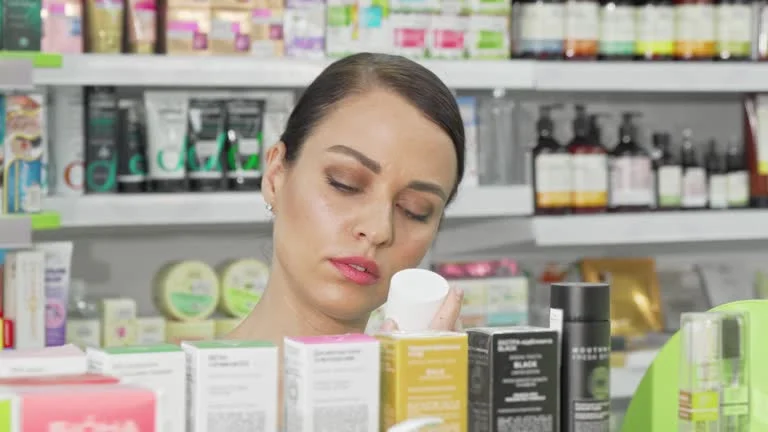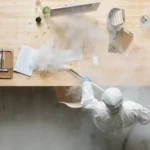Cosmetic aisles are meant to be spaces where shoppers can browse new lotions, smell fragrances, and test products. Yet beneath that inviting setup lies a quieter danger that often goes unnoticed. A small leak from a lotion bottle or a slow drip from a damaged container can create a hazardous situation long before anyone realizes a spill exists. An injury attorney serving Fort Collins residents often sees how these hidden hazards turn an ordinary shopping trip into an unexpected medical crisis.
While sudden spills are easy to imagine, the subtle leaks that spread gradually across shelves or floors present a more deceptive threat. These leaks can remain undetected for long periods, creating slick surfaces that catch shoppers off guard. Understanding how and why these hidden spill zones develop is an important step in monitoring cosmetic aisles and reducing injuries.
Why Slow Leaks Happen More Often Than Shoppers Realize
Lotion bottles and cosmetic containers are designed for easy access. Pumps, flip caps, and twist tops help customers try products quickly, but this convenience also introduces opportunities for leaks. A bottle with a slightly loose lid can seep product over time. A pump that sits unevenly can release a small amount of lotion throughout the day. These drips may look insignificant at first, but lotion spreads into thin, nearly invisible films that are extremely slippery.
Manufacturing defects further contribute to hidden hazards. A cracked container may leak slowly during shipment, and employees stocking shelves might not notice the thin layer of lotion that starts forming beneath the product. When a shopper eventually picks up the bottle, that accumulated lotion may transfer to their hands or drip onto the aisle, creating a risk where none appears obvious.
Tester stations also increase the chance of unnoticed leaks. High traffic around these displays means containers are used frequently. A bottle that was placed back incorrectly or left uncapped can release product long after a customer walks away. Employees may intend to check stations often, but during busy times, these small leaks can develop faster than they can be addressed.
The Hidden Nature of Shelf Leaks
One of the most dangerous aspects of slow-leaking containers is that they rarely create immediate, visible messes. Shoppers usually expect spills to be on the floor. However, many leaks begin on the shelves themselves. Lotion builds up along the underside of bottles or runs downward onto lower shelves before eventually reaching the floor. This creates a cascading hazard as customers who kneel, reach, or shift products unknowingly make contact with slick residue.
Some spills do not reach the floor at all. Instead, they coat the sides of containers, shelf edges, or product labels. When a shopper grabs a bottle and feels unexpected slipperiness, they may drop the container or lose balance. Even a momentary reflex to recover can lead to a fall, especially on glossy store tiles where lotion blends in.
These hidden hazards are especially dangerous in crowded aisles where visibility is limited. A shopper might not see a sheen on the floor because people or product displays obstruct the view. Without the ability to anticipate the risk, they step on a slick patch and fall before recognizing anything is wrong.
Injuries Caused by These Unseen Spill Zones
Slip and fall injuries from cosmetic aisle leaks range from mild to severe. A sudden loss of footing can lead to sprains, twisted ankles, or bruised joints. When a shopper falls backward, the risk of striking the head increases significantly. Wrist and arm fractures commonly occur as people instinctively try to catch themselves.
Children and older customers are particularly vulnerable. Younger shoppers move quickly and may run ahead of adults without watching the ground. Older customers often have limited balance or reaction time. For them, even a minor slick spot can trigger a dangerous fall that leads to long-term recovery.
The subtle nature of slow leaks also means injuries may happen in areas where people feel safest, such as near neatly arranged shelves or well-lit product displays. When hazards are not obvious, they are more difficult to avoid.
How Shoppers Can Stay Alert
Although stores hold responsibility for monitoring spill risks, shoppers can take steps to protect themselves. Observing shelves as closely as the floor helps identify lotion build-up or residue on product packaging. A container that feels slightly sticky should be handled carefully or avoided altogether.
Shoppers should also look for small streaks or shine on the floor. Even tiny smudges can indicate a larger problem nearby. Wearing shoes with a reliable grip can offer added stability, although no footwear can guarantee protection on a lotus-covered tile. Above all, avoiding unnecessary interaction with non-tester products reduces the likelihood of accidentally causing or encountering leaks.
What Stores Can Do To Address Hidden Leaks
Proactive monitoring is essential. Cosmetic aisles require more frequent inspections than most retail areas. Staff should check shelves for dampness, residue, or bottles that appear overused or damaged. Tester stations benefit from structured maintenance routines and clear signage that remind shoppers to handle products responsibly.
Absorbent mats placed under tester areas or at the ends of high-traffic aisles help catch minor leaks before they spread. Training employees to recognize early signs of shelf leakage ensures faster intervention. When staff treat small drips as early warnings rather than isolated incidents, the overall risk decreases significantly.
Why Hidden Spill Awareness Matters
Seemingly harmless cosmetic products create serious dangers when left to leak unnoticed. The subtle spread of lotion across shelves and floors transforms an ordinary shopping aisle into a high-risk environment. An injury attorney serving Fort Collins residents understands how these hidden hazards develop and how quickly they lead to injuries, making awareness and prevention critical for both shoppers and stores.






